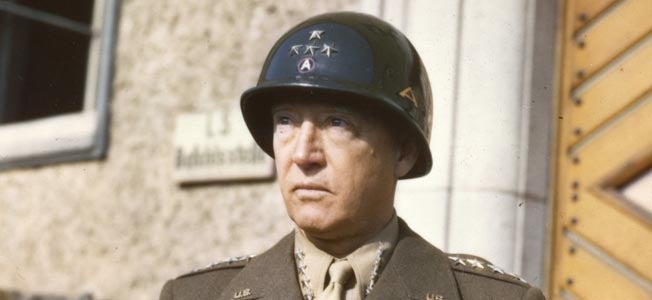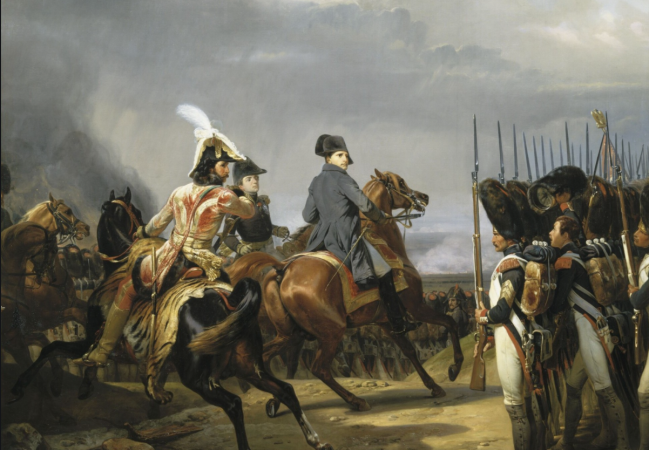Before the tank entered the lexicon of military history, there was horse cavalry.
The horse, like the modern day tank, provided support to the infantry and artillery. However, while every kingdom, like every modern nation today, has some sort of mobile land support designed to punch holes through enemy lines, only a handful of nations have the best trained. So here we take a look at 5 epic cavalry formations of the ancient world.
1. The Numidians (light cavalry)
The Numidians were from what is now Algeria and were known for their cavalry abilities.

The Numidian cavalry of the ancient world. (Photo Wikimedia Commons)
Hannibal used these Numidian cavalrymen during the Second Punic War. So what made the Numidian cavalry so darn good?
The Numidians saw many battles during Hannibal’s campaign in Roman Italy. The Greek historian Polybius, describes the Numidian warriors as light cavalry armed with missile weapons (javelins). The Battle of Cannae 216 BCE, showcased their abilities.
What made the Numidian cavalry so effective at Cannae is that unlike the Spaniard and Celtic cavalries that also accompanied Hannibal, the Spaniard and Celtic horsemen were heavy cavalries that fought en masse, much like the Roman cavalry. The Numidians, being light cavalry, fought in a much looser formation and because of this, they harassed the Roman cavalry with complicated tactics before disengaging.
And while the Celtic and Spaniard cavalries had the Roman cavalry fixed, the Numidians went from harassment to providing shock support once the Roman cavalry turned their back. This caused the Roman cavalry to flee once the Numidians made contact and understood that if they do not make a break for it, they would be enveloped and decimated.
2. The Scythians (light cavalry)
The Scythians may not be the original inventors of asymmetrical warfare, but one could argue that they perfected it.

(Photo from Wikimedia Commons)
The Scythians were ancient nomadic horse warriors who were first mentioned by the Assyrians during the reign of Sargon II (reigned 722 – 705 BCE). What made these horsemen so powerful was that they were raised in the saddle and were typically armed with a distinctive composite bow.
The Scythian bow is unique and revered throughout the ancient world by kings, historians, and a philosopher. King Esarhaddon of Assyria had a Cimmerian bow, the Babylonian armies of Nebuchadnezzar II and Nabonidus were equipped with their bows and arrows, and even Hercules’ Greek portrait displays him armed with a Scythian bow. The Greek philosopher Plato said,
The customs of the Scythians proves our error; for they not only hold the bow from them with the left hand and draw the arrow to them with their right, but use either hand for both purposes.
When one examines the Scythian lifestyle, one can easily gain an understanding of the type of warfare necessarily carried on against more sedentary (non-migratory) people, like those in Mesopotamia. The Scythian took a guerilla approach to warfare as their method, using small bands to conduct military operations. Herodotus mentions their method of warfare when King Darius of Persia campaigned against them.
It is thus with me, Persian: I have never fled for fear of any man, nor do I now flee from you; this that I have done is no new thing or other than my practice in peace. But as to the reason why I do not straightway fight with you, this too I will tell you. For we Scythians have no towns or planted lands, that we might meet you the sooner in battle, fearing lest the one be taken or the other wasted. But if nothing will serve you but fighting straightway, we have the graves of our fathers; come, find these and essay to destroy them; then shall you know whether we will fight you for those graves or no. Till then we will not join battle unless we think it good.
The description indicates that the Scythians against whom Darius was warring had no center of gravity. King Darius’ military campaign into Scythia (modern Ukraine) went for nothing. As he could not catch them, the Scythians burnt their own their fields, destroyed Persian supplies, and harassed his forces with hit and run tactics.
In the end, Darius turned his large army around and headed home before it was annihilated.
3. The Parthians (light cavalry)
The Parthian horsemen are much like the Scythians.
The Parthians also known as the Parni/Aparni, originated from eastern Iran and like the Scythians, wore light attire, carried a composite bow and a sidearm — possibly a sword or a dagger. What made the Parthian horse archers so powerful was their ability to hit and run, and this was demonstrated at the Battle of Carrhae in 53 BCE between the Roman Republic and the Parthian Empire.

(Photo Wikimedia Commons)
The Roman general Crassus led his Roman legions into the desert wilderness thinking they were going to face a pussycat. Instead, they found themselves face-to-face with an equal foe. Once Crassus gave the order to form a square, the Parthian horse archers saw an opportunity. They showered the Romans with raining death.
The average Parthian horse archer, with a quiver of 30 arrows, loosed between eight to ten arrows a minute at Carrhae. It would take almost three minutes to exhaust his arsenal before needing to be resupplied. The amount of Parthian horse archers at the battle is estimated at 10,000. Now, if all 10,000 fired away for 20 minutes, the amount of arrows fired by an individual horse archer would have been between 160-200 arrows. Take 10,000 and the amount of arrows fired upon the Roman soldiers are estimated to have been an astounding 1.6-2 million arrows in a 20-minute timeframe.
The Greek biographer and essayist Plutarch describes the devastation brought upon the Roman legions.
In the convulsion and agony of their pain they writhed as the arrows struck them; the men broke them off in their wounds and then lacerated and disfigured their own bodies by trying to tear out by main force the barbed arrow heads that had pierced through their veins and muscles.
Romans could do little, for if they break formation they are dead, if they stand still they are dead but have a chance. Only nightfall saved them. While the Parthian horse archers showered the Romans with death, the Parthian cataphract was the hammer.
4. The Parthian Cataphract (heavy armored cavalry)
When it comes to heavy cavalry in the ancient world, the Parthian cataphract takes the lead.

Parthian heavy armored cataphract. (Photo from Wikimedia Commons)
The word cataphract comes from the Greek Kataphraktos means “completely enclosed.” The origins of the cataphract may not have started with the Parthians but with the Massagetae, who also inhabited portions of Eastern Iran three centuries before the arrival of the Parthians. If you want more info on this, click “here.”
The Parthian cataphract in many ways looked like the medieval knights of Europe. What made them so effective on the field of battle was that the rider and horse were covered in armor. The rider would carry a lance, sword, and presumably a bow.
At the Battle of Carrhae, the cataphract would charge into Roman lines once the legions locked shields to protect themselves from the arrows. According to Plutarch, the cataphracts would hit the lines with such a force that “many (Romans) perished hemmed in by the horsemen. Others were knocked over by the pikes or were carried off transfixed.”
This hit and run attack would go on for some time until the Roman broke and fled.
5. Late Roman Equites Cataphractarii and Sassanid Clibanarii (very heavily armored cavalry)
It may be an understatement to say that Equites cataphractarii were heavy cavalry as they were indeed the heaviest of the bunch.

(Photo from Wikimedia Commons)
The Equites cataphractarii were Roman. What is known about them is that they were designed to combat the best the east (Sassanid Empire) had to offer, which were the Clibanarii. The Roman historian Ammianus Marcellinus describes the Equites cataphractarii:
among them were the full-armoured cavalry (whom they called clibanarii or cataphracti equites ), all masked, furnished with protecting breastplates and girt with iron belts, so that you might have supposed them statues polished by the hand of Praxiteles, not men. Thin circles of iron plates, fitted to the curves of their bodies, completely covered their limbs; so that whichever way they had to move their members, their garment fitted, so skilfully were the joinings made
The Clibanarii were Sassanid. However, the Sassanids also used this term to describe the Equites cataphractarii. The description provided by Ammianus Marcellinus about the Clibanarii goes as follows:
Moreover, all the companies were clad in iron, and all parts of their bodies were covered with thick plates, so fitted that the stiff joints conformed with those of their limbs; and the forms of human faces were so skilfully fitted to their heads, that, since their entire bodies were plated with metal, arrows that fell upon them could lodge only where they could see a little through tiny openings fitted to the circle of the eye, or where through the tips of their noses they were able to get a little breath. Of these some, who were armed with pikes, stood so motionless that you would think them held fast by clamps of bronze.
The Persians opposed us serried bands of mail-clad horsemen in such close order that the gleam of moving bodies covered with closely fitting plates of iron dazzled the eyes of those who looked upon them, while the whole throng of horses was protected by coverings of leather.
So who had the best cavalry in the ancient world? Well, the answer to that question is the various nomads who dotted the Eurasian Steppe, Central Asia, and the Iranian plateau. These various nomads are the ones who not only perfected horse archery and heavy cavalry, they also brought civilization the chariot.
However, horse archers and heavy cavalry — no matter the kingdom — would come to an end once the gunpowder age arrived. Eventually new tactics took the rider off his mount and placed him into a tank.










